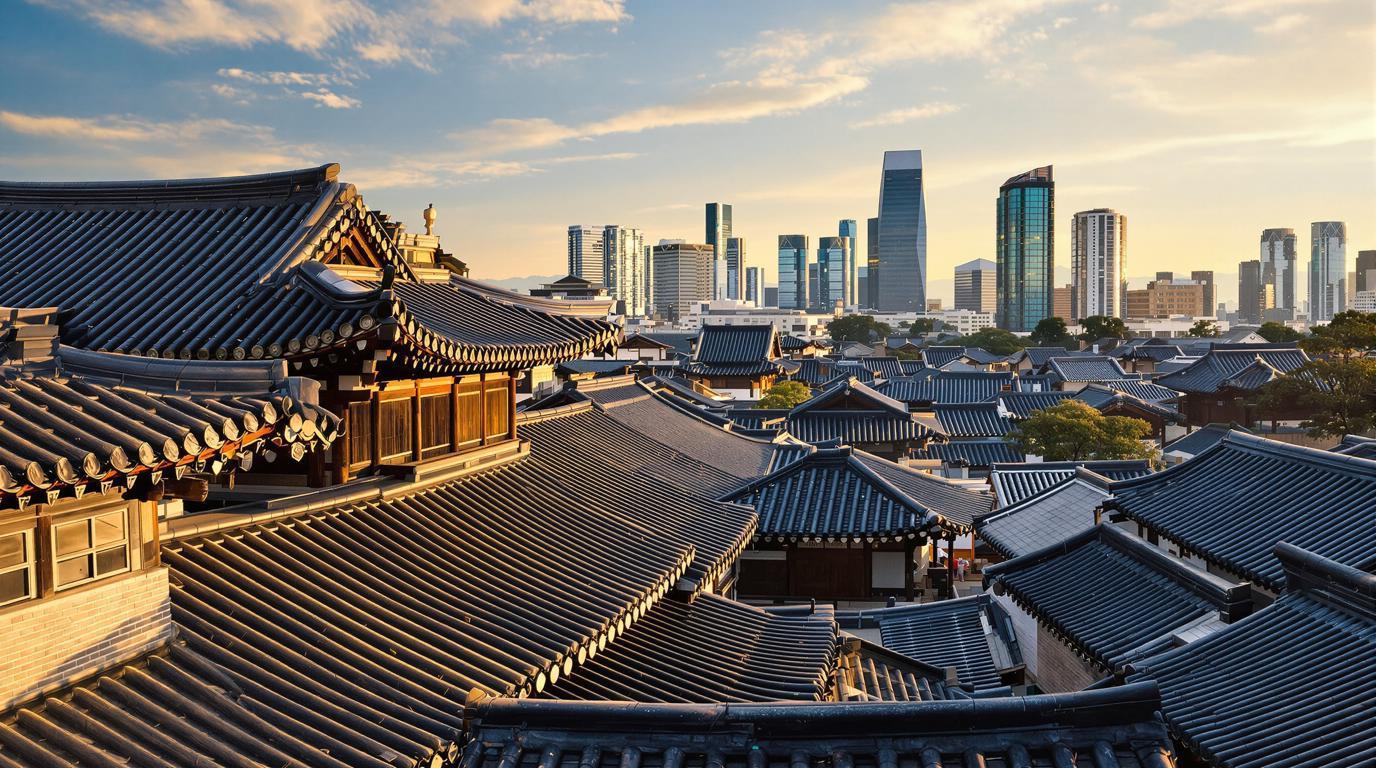Standing in Seoul’s Bukchon Hanok Village at dawn, I watched elderly residents sweep their courtyards while tourists slept, unaware that this 600-year-old neighborhood now guards its secrets behind strict curfews. This sprawling metropolis of 9.7 million might mirror Tokyo’s neon-lit energy, but Seoul conceals 1,394 years of dynastic heritage at a fraction of the cost. While Tokyo empties your wallet, Seoul delivers authentic cultural immersion for 60% less, hidden within a basin surrounded by 300-meter hills that most visitors never explore.
The Han River bisects this continental treasure, creating distinct cultural districts where ancient palaces coexist with hypermodern technology. Unlike Tokyo’s predictable tourist circuits, Seoul’s authentic neighborhoods resist discovery, with locals implementing revolutionary measures to preserve their living heritage from mass tourism’s grip.
After photographing traditional markets across Asia for fifteen years, I’ve learned to recognize when a city truly protects its soul. Seoul doesn’t just preserve history—it actively shields authenticity from tourist invasion through innovative urban planning that prioritizes residents over revenue.
The dynastic secret that modern Seoul fiercely protects
Bukchon’s revolutionary anti-tourism curfew system
Seoul’s Bukchon Hanok Village implements something extraordinary: red zones with 5 PM to 10 AM tourist curfews that allow 6,100 residents to reclaim their historic neighborhood from 6 million annual visitors. Violators face 100,000 won fines starting March 2025, while chartered buses are banned from Anguk Station to Samcheong Park. This isn’t anti-tourism—it’s pro-authenticity, ensuring that when you do visit during permitted hours, you experience genuine traditional Korean architecture rather than an overcrowded theme park.
Royal palaces anchored in 1,394 years of continuous heritage
Gyeongbok Palace grounds reveal Seoul’s true age advantage over Tokyo’s rebuilt landmarks, with Joseon dynasty foundations following ancient Confucian geomantic principles called pungsu-jiri-seol. These aren’t reconstructions—they’re living monuments where Korean traditional architecture survived centuries of political upheaval, creating an authentic cultural experience that Tokyo’s modern reconstructions simply cannot match.
Hidden authenticity that defies mass tourism
The subway system that outsmarts overcrowding
Seoul’s subway operates at 145.7% average congestion, yet innovative AI-based traffic flow management systems optimize passenger movement in real-time, something Tokyo’s aging infrastructure struggles to achieve. Line 4 peaks at 185.8% capacity, but movable fences at City Hall Station and safety barriers at Seoul National University Station demonstrate how Seoul adapts technology to preserve authentic urban mobility rather than building tourist-focused transportation.
Traditional markets where vendors still control access
Traditional markets throughout Seoul maintain vendor density and authentic pricing that serves locals first, tourists second. Unlike Tokyo’s tourist-oriented food scenes, Seoul’s market vendors haven’t inflated prices for foreign visitors, creating genuine cultural exchange opportunities where you’re experiencing real Korean daily life rather than manufactured tourist experiences.
Travel Note: “After visiting Seoul’s traditional markets at 6 AM, I realized why locals wake early—they’re protecting their authentic food culture from tourist inflation. The elderly vendor who sold me kimchi for 3,000 won explained that maintaining local pricing preserves community relationships that tourism often destroys.”
The exclusive experience locals reluctantly share
Monsoon season reveals Seoul’s authentic rhythm
July’s monsoon season drives Seoul indoors, creating perfect conditions for experiencing traditional tea houses, temple meditation sessions, and covered market explorations that tourists typically skip. While Tokyo’s summer heat creates miserable tourist conditions, Seoul’s monsoon creates cozy cultural intimacy where locals genuinely welcome visitors seeking authentic indoor experiences rather than outdoor photo opportunities.
Neighborhood secrets beyond tourist zones
Seoul’s authentic districts extend far beyond Bukchon, with residential neighborhoods like Seongsu-dong and Yeonnam-dong offering genuine Korean urban life without tourist infrastructure. These areas cost significantly less than Tokyo’s equivalent neighborhoods while providing deeper cultural immersion through local cafes, traditional restaurants, and community spaces where residents actually live rather than perform for visitors.
Insider access and practical Seoul secrets
Cost advantages that Tokyo cannot match
Seoul’s accommodation, dining, and transportation costs average 60% less than Tokyo’s equivalent experiences, but the real savings come from accessing authentic cultural activities that Tokyo prices out of reach. Traditional Korean spa experiences, temple stays, and local cooking classes offer genuine cultural immersion at prices that allow extended exploration rather than rushed tourist consumption.
Seasonal timing for authentic experiences
Seoul’s continental climate creates distinct seasonal personalities that reward timing over convenience. Spring and autumn offer ideal temperatures around 75°F for outdoor palace exploration, while summer monsoons create perfect conditions for indoor cultural experiences that reveal Seoul’s authentic rhythms beyond tourist expectations.
Seoul ranks 5th globally for technology adoption and 13th for public transit efficiency, yet maintains traditional neighborhood structures that Tokyo’s modernization destroyed decades ago. This metropolitan paradox creates cultural authenticity that no amount of tourist infrastructure can replicate. While Tokyo costs drain budgets, Seoul rewards curiosity with genuine cultural discoveries that respect both tradition and innovation.
The next time someone suggests Tokyo for authentic Asian urban culture, remember Seoul’s revolutionary approach to preserving authenticity while embracing progress. You’ll discover why 25 million metropolitan residents have created something Tokyo lost long ago—a living city where ancient wisdom shapes modern life rather than being displaced by it.
